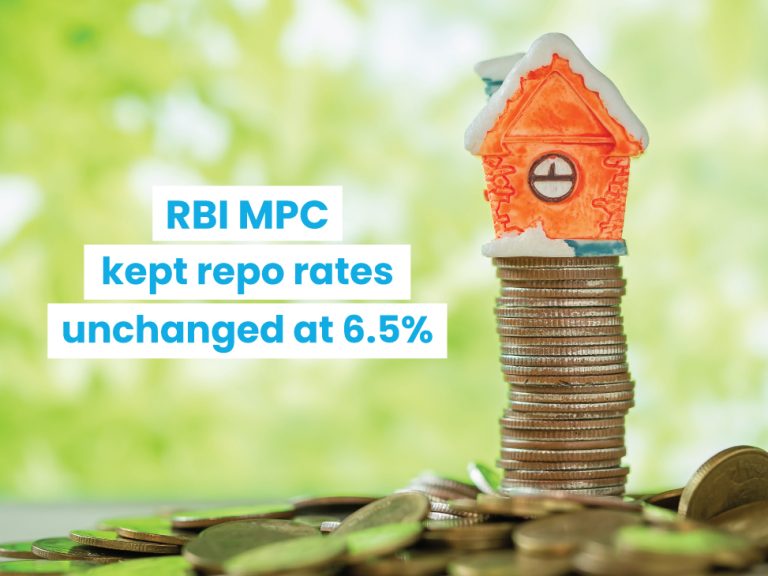Last Updated on 17th October 2024
Getting home loan is very BASIC now
Get a loan in under 5 mins

Last Updated on 17th October 2024
In the context of the current economic climate and the Reserve Bank of India’s (RBI) recent monetary policy announcements, the real estate sector, particularly the residential segment, finds itself at a pivotal juncture. Despite the RBI’s decision to maintain the repo rate at 6.5% for the sixth consecutive Monetary Policy Committee (MPC) Meet 2024, there is a tangible sense of optimism among home loan borrowers and industry experts. Here we delve into the implications of these decisions and offer insights into the potential trajectory of home loan interest rates and the broader economic factors at play.
The RBI’s steadfast approach to holding the repo rate steady comes against a backdrop of significant economic considerations, including the need to balance growth with inflation control. The central bank’s strategy reflects cautious optimism, acknowledging the pressures of global inflation while also recognizing the resilience of the Indian economy. Despite the static repo rate, there is anticipation that home loan EMIs could see a reduction of 3-5% within the year, a move that would provide considerable relief to borrowers, especially those who have experienced sharp interest rate increases over the past three years.
Suggested read: Interim Budget 2024
A critical factor underpinning the RBI’s monetary stance is the current inflationary trend. While global inflation has posed significant challenges, the Indian economy has shown signs of robustness, with inflation rates now dipping below the 6% mark, the upper threshold of the RBI’s tolerance zone. This moderation in inflation, coupled with controlled non-capital expenditure by the government, suggests that there may be room for the RBI to maneuver interest rates downward shortly.
Industry experts point to benign inflation and strong economic growth as key drivers that may enable the RBI to consider reducing rates in the coming days. The recent budgetary measures, including a lower fiscal deficit and reduced gross market borrowings, further bolster this outlook. Additionally, the expected inclusion of Indian securities in global indices from June 2024 is likely to attract substantial foreign investment, potentially easing yield pressures and creating a conducive environment for rate cuts.
Suggested read: Real Estate Investments in India for 2024
For home loan borrowers, the current scenario presents several strategies to maximize the benefits of any forthcoming rate reductions. Transitioning to loans linked to external benchmark lending rates (EBLR) is advisable for those currently under older loan regimes. This switch can ensure that borrowers directly benefit from any reduction in rates. Moreover, for those with loans from Non-Banking Financial Companies (NBFCs) or housing finance companies, remaining with competitive lenders is crucial, as is the possibility of refinancing to secure lower interest rates.
The RBI’s monetary policy, while maintaining a steady course for now, hints at a potential easing of rates in the latter half of the year, in line with improving economic indicators and inflationary trends. For home loan borrowers, this could herald a period of relief and opportunity, particularly for those looking to enter the housing market or manage existing loan burdens more effectively. The anticipation of rate cuts, driven by a confluence of fiscal prudence and strategic monetary policy, underscores a cautiously optimistic outlook for India’s economic trajectory and the real estate sector at large.
Source: The Economic Times